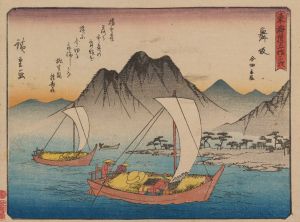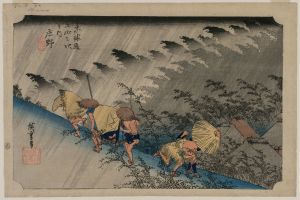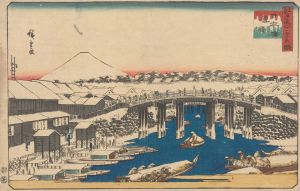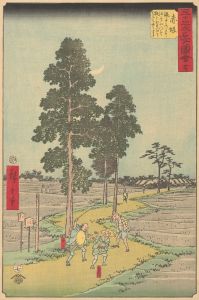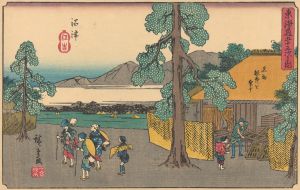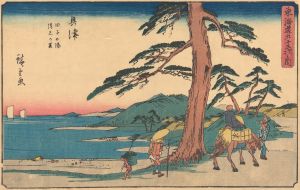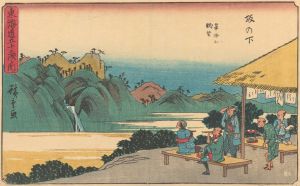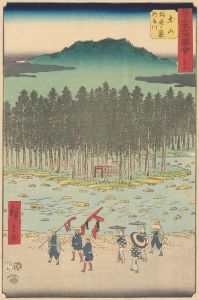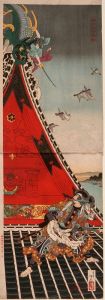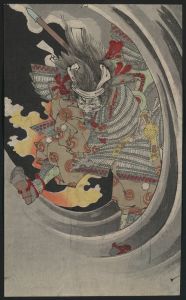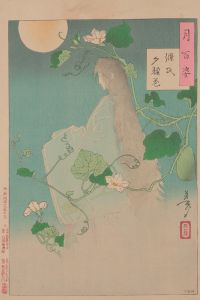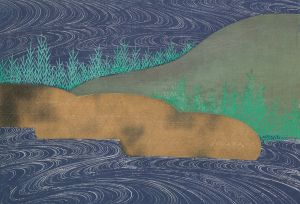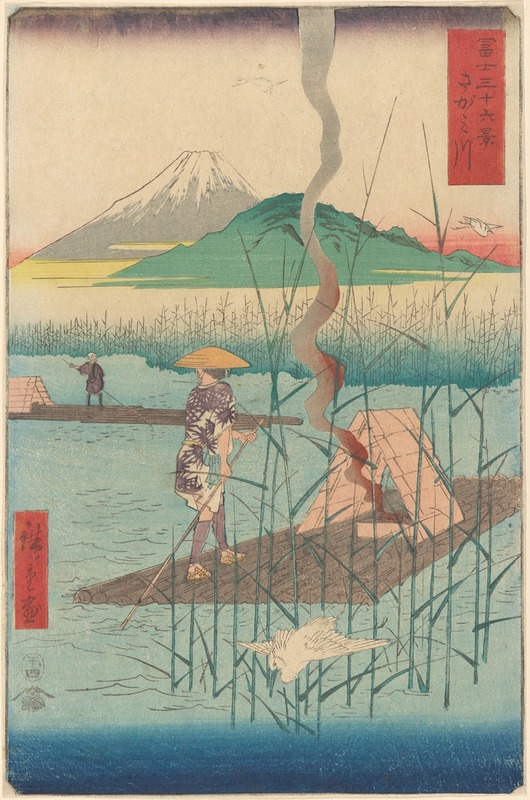
Shoshiyu, Raft among Reeds
A hand-painted replica of Andō Hiroshige’s masterpiece Shoshiyu, Raft among Reeds, meticulously crafted by professional artists to capture the true essence of the original. Each piece is created with museum-quality canvas and rare mineral pigments, carefully painted by experienced artists with delicate brushstrokes and rich, layered colors to perfectly recreate the texture of the original artwork. Unlike machine-printed reproductions, this hand-painted version brings the painting to life, infused with the artist’s emotions and skill in every stroke. Whether for personal collection or home decoration, it instantly elevates the artistic atmosphere of any space.
Andō Hiroshige, a renowned Japanese ukiyo-e artist of the Edo period, is celebrated for his landscapes and innovative compositions that capture the transient beauty of nature. One of his works, "Shoshiyu, Raft among Reeds," exemplifies his mastery in depicting serene and evocative scenes. Although specific details about this particular piece are limited, it can be appreciated within the broader context of Hiroshige's artistic style and contributions to the ukiyo-e genre.
Hiroshige was born in 1797 in Edo, now Tokyo, and began his artistic training at a young age. He became a student of Utagawa Toyohiro, a prominent ukiyo-e artist, which significantly influenced his development. Hiroshige's work is often associated with the "pictures of the floating world" genre, which typically depicted scenes of urban life, kabuki actors, and beautiful women. However, Hiroshige carved a niche for himself with his focus on landscapes and nature.
"Shoshiyu, Raft among Reeds" likely reflects Hiroshige's keen observation of the natural world and his ability to convey its tranquility and beauty. His landscapes often feature elements such as rivers, mountains, and rural life, capturing the essence of the Japanese countryside. Hiroshige's use of color, perspective, and composition creates a sense of depth and movement, inviting viewers to immerse themselves in the scene.
Hiroshige's work was part of a larger movement during the Edo period that saw a growing interest in travel and the natural environment. This was partly due to the development of the Tōkaidō road, which connected Edo with Kyoto, facilitating travel and cultural exchange. Hiroshige himself traveled along this route, producing his famous series "The Fifty-three Stations of the Tōkaidō," which depicted various locations along the way. This series was highly influential and helped establish Hiroshige's reputation as a master of landscape art.
The ukiyo-e technique involves woodblock printing, a process that allows for the mass production of artworks. This made Hiroshige's prints accessible to a wide audience, contributing to their popularity both in Japan and abroad. His work had a significant impact on Western art, particularly during the Japonisme movement in the late 19th century, influencing artists such as Vincent van Gogh and Claude Monet.
While specific information about "Shoshiyu, Raft among Reeds" is scarce, it can be appreciated as part of Hiroshige's broader oeuvre, which emphasizes the harmony and beauty of nature. His ability to capture the ephemeral qualities of the natural world continues to resonate with audiences today, highlighting the enduring appeal of his work.
In summary, Andō Hiroshige's "Shoshiyu, Raft among Reeds" is a testament to his skill in portraying the serene beauty of nature through the medium of ukiyo-e. Although details about this specific piece are limited, it remains an integral part of Hiroshige's legacy as one of Japan's most celebrated artists. His influence extends beyond his time, leaving a lasting impact on both Japanese and Western art traditions.





